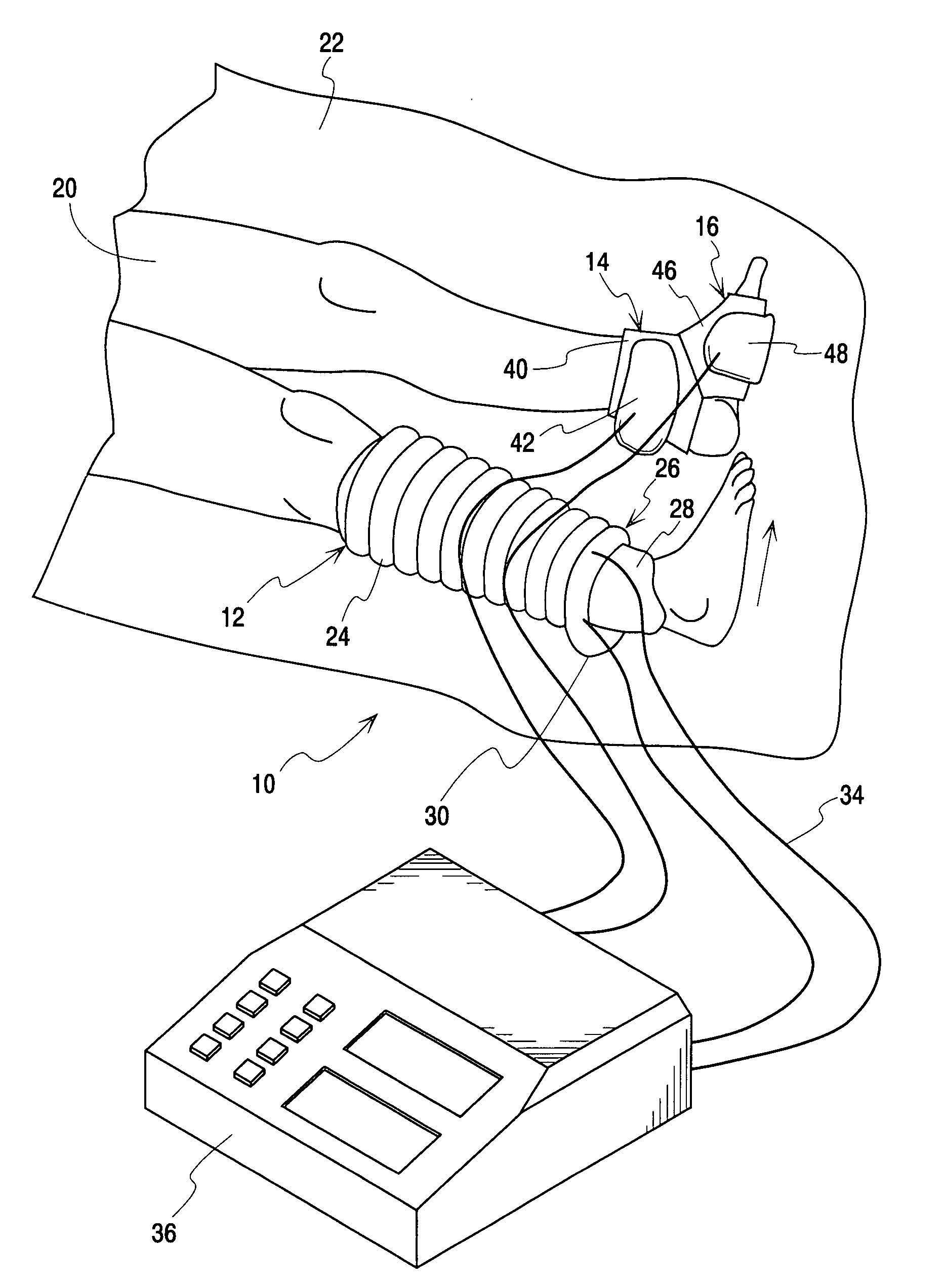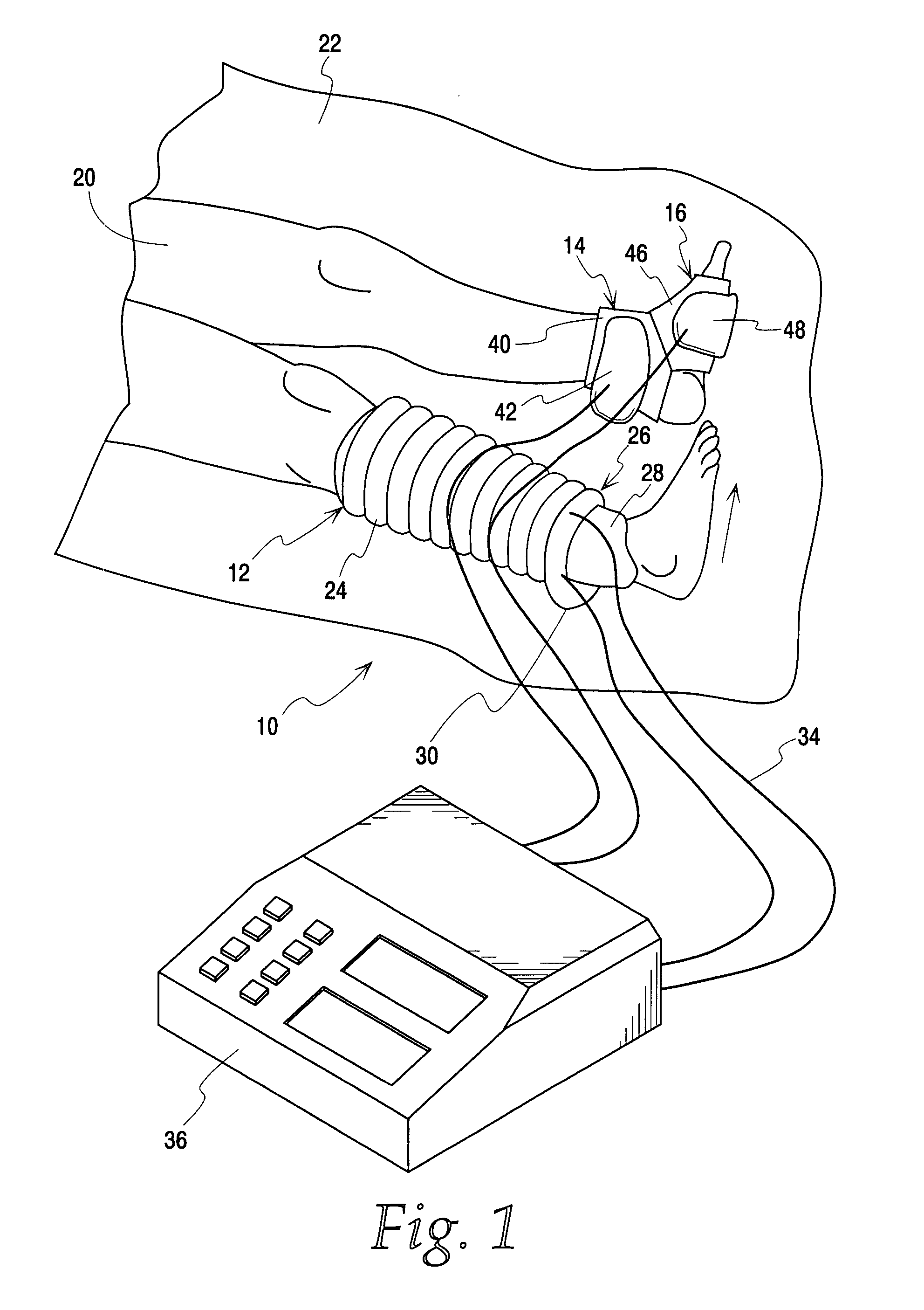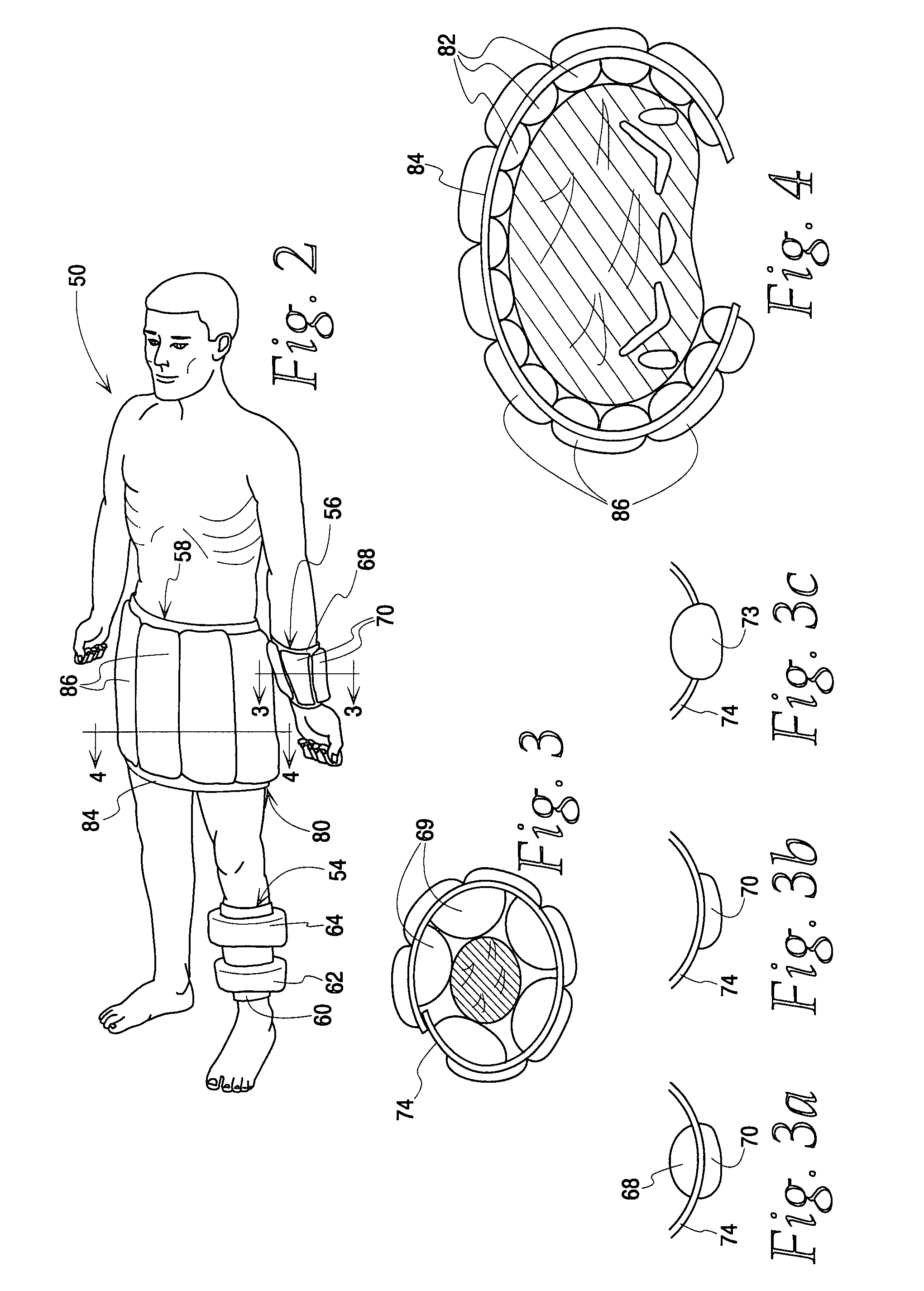Motion therapy system
- Summary
- Abstract
- Description
- Claims
- Application Information
AI Technical Summary
Benefits of technology
Problems solved by technology
Method used
Image
Examples
Embodiment Construction
[0030]FIG. 1 illustrates several embodiments of a patient motion therapy system according to the present invention which is generally indicated by the numeral 10. For illustrative purposes, three treatment / therapeutic systems 12, 14 and 16 are shown. Normally, the use of more than one or two treatment systems at one time would not be expected. Each treatment system operates independently to provide movement of a patient's body part that is needed for therapeutic or prophylactic intervention. In particular, the legs 20 of a patient reclining on a bed, table or other support surface 22 are shown. In one embodiment, a first treatment system 12 incorporates two combined systems, a sequential pressurization system 24 and a motion therapy system 26 in a dual purpose device that reduces the risk of deep vein thrombosis and reduces the risk of developing heel pressure ulcers.
[0031]Basically, sequential pressurization system 24 includes a plurality of individual cylindrical pressure cells ar...
PUM
 Login to View More
Login to View More Abstract
Description
Claims
Application Information
 Login to View More
Login to View More - Generate Ideas
- Intellectual Property
- Life Sciences
- Materials
- Tech Scout
- Unparalleled Data Quality
- Higher Quality Content
- 60% Fewer Hallucinations
Browse by: Latest US Patents, China's latest patents, Technical Efficacy Thesaurus, Application Domain, Technology Topic, Popular Technical Reports.
© 2025 PatSnap. All rights reserved.Legal|Privacy policy|Modern Slavery Act Transparency Statement|Sitemap|About US| Contact US: help@patsnap.com



